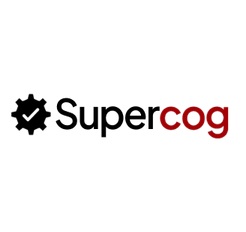Agentic AI Comparison:
Hebbia AI vs Supercog
Introduction
This report compares two AI-powered research and analysis platforms: Hebbia AI and Supercog. Both aim to enhance knowledge work, but take different approaches to augmenting human intelligence with AI capabilities.
Overview
Supercog
Supercog is an AI research assistant that helps users find, summarize and synthesize information from academic papers and other sources. It aims to accelerate the research process by automating literature reviews and generating insights.
Hebbia AI
Hebbia AI is an enterprise-grade AI platform that uses large language models to analyze vast amounts of structured and unstructured data. Its flagship product Matrix allows users to build AI agents that can complete complex end-to-end tasks across millions of documents.
Metrics Comparison
Autonomy
Hebbia AI: 9
Hebbia's Matrix platform can autonomously process huge datasets and complete complex multi-step tasks with minimal human input. It breaks down queries into subtasks and shows its work, allowing for high autonomy while maintaining transparency.
Supercog: 7
Supercog can autonomously search for and summarize relevant research papers, but likely requires more human guidance to synthesize insights across papers compared to Hebbia's end-to-end task completion.
Hebbia appears to have an edge in autonomy due to its ability to handle more complex end-to-end workflows across larger datasets with less human intervention.
Ease of Use
Hebbia AI: 7
Hebbia's Matrix interface is described as intuitive and spreadsheet-like. However, as an enterprise platform handling complex tasks, it likely has a steeper learning curve than simpler research tools.
Supercog: 8
As a tool aimed at individual researchers, Supercog likely prioritizes ease of use with a simple interface for searching papers and generating summaries. Its more focused functionality may make it easier to pick up quickly.
While both aim for user-friendliness, Supercog's more targeted functionality for researchers may give it a slight edge in ease of use for its intended audience.
Flexibility
Hebbia AI: 9
Hebbia can ingest and analyze a wide variety of data types including documents, spreadsheets, and even audio/video. Its ability to build custom AI agents for specific workflows offers high flexibility for different use cases.
Supercog: 6
Supercog appears more focused on academic research workflows. While flexible within that domain, it may be less adaptable to other types of knowledge work compared to Hebbia's broader enterprise platform.
Hebbia's enterprise focus and ability to handle diverse data types and workflows gives it greater overall flexibility compared to Supercog's more specialized academic research use case.
Cost
Hebbia AI: 5
Exact pricing is not public, but Hebbia is described as a premium enterprise product with pricing comparable to Bloomberg Terminal subscriptions. This suggests high costs, potentially $20,000+ per user annually.
Supercog: 7
While specific pricing is not available, as a tool aimed at individual researchers and smaller teams, Supercog is likely more affordably priced than Hebbia's enterprise offering.
Supercog is likely more cost-effective for individual users or small teams, while Hebbia's premium pricing reflects its enterprise-grade capabilities but may be prohibitive for smaller organizations.
Popularity
Hebbia AI: 8
Hebbia has gained significant traction, reportedly being used by 33% of top global asset managers and achieving 90% penetration among top PE firms. It has also secured $161M in funding, indicating strong investor interest.
Supercog: 6
While specific adoption metrics are not available, Supercog appears to have a growing user base in academic and research communities. However, it likely has lower overall adoption compared to Hebbia's reported penetration in finance.
Hebbia seems to have achieved greater popularity and adoption, particularly in finance and enterprise sectors, while Supercog's popularity may be growing but more concentrated in academic research circles.
Conclusions
Hebbia AI and Supercog both offer valuable AI-powered research and analysis capabilities, but target different use cases and user bases. Hebbia stands out for its enterprise-grade platform with high autonomy, flexibility, and ability to handle complex end-to-end tasks across massive datasets. This comes with premium pricing and potentially steeper learning curves. Supercog offers a more focused tool for academic research, likely with greater ease of use and affordability for individual researchers, but less overall flexibility. Organizations should consider their specific needs, scale, and budget when choosing between these platforms. Large enterprises dealing with diverse, high-volume data may benefit more from Hebbia, while individual researchers or smaller teams focused on academic literature may find Supercog a better fit.

